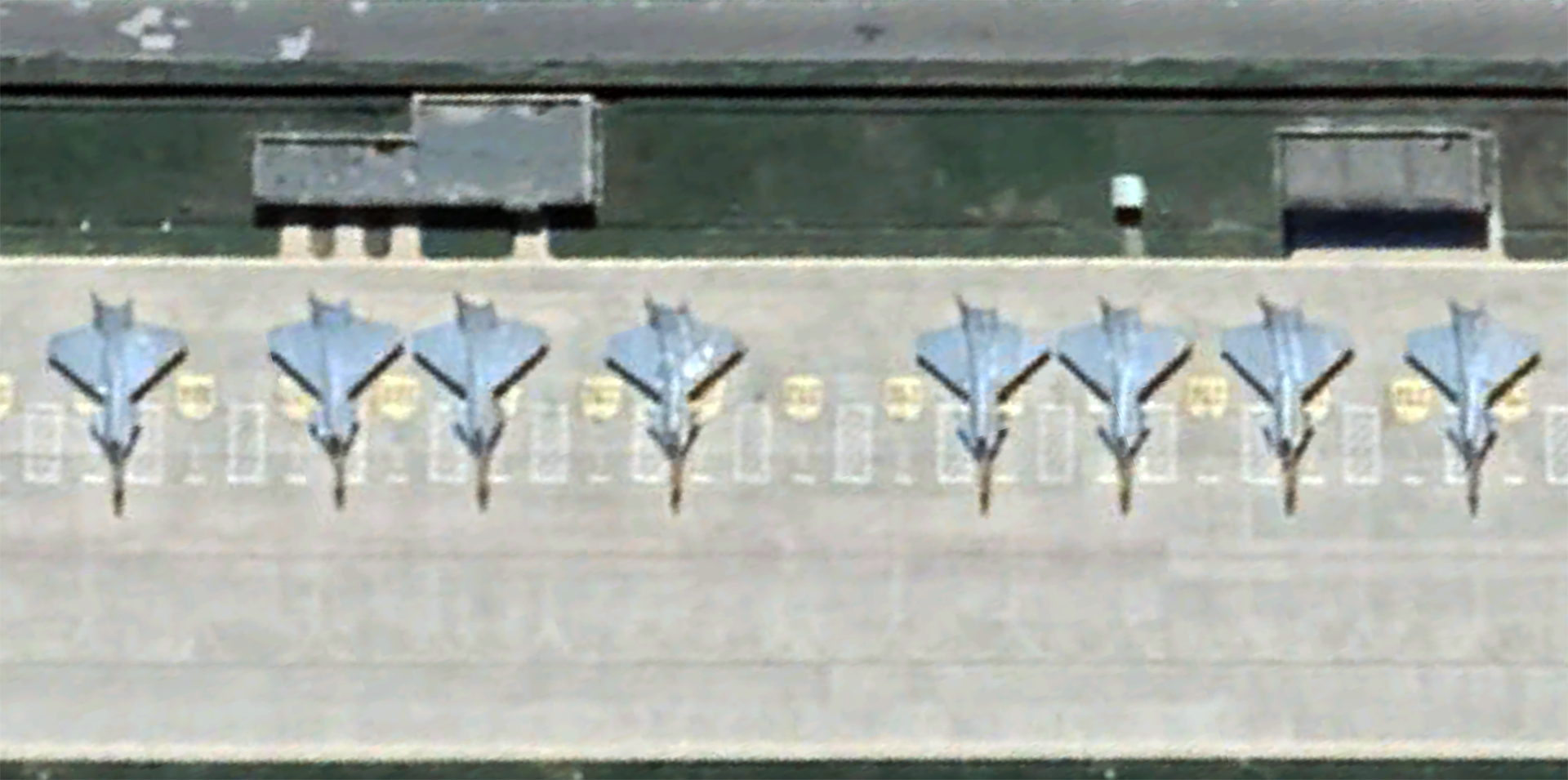A row of unusual fighter aircraft has appeared at a Chinese airbase. There has already been speculation that these could be full-scale decoys or mock-ups of the Chengdu J-20 stealth fighter, China’s latest in-service combat jet, but their exact function is unclear. Indeed, certain aspects of their appearance raise even more questions, since they seem to be only loosely based on the J-20, if at all.
The eight ‘airframes’ are seen in a recent update to the Google Earth database, dated July 2022, which we were alerted to by Twitter user @foolsball. The location is Lintao Air Base, a relatively obscure facility that’s located northeast of Lanzhou, in Gansu Province, north-central China.
This airbase is normally home to J-7H fighters of the 18th Air Regiment, 13 of which can also be seen on the same flight line on the north of the facility, covered in distinctive red/pink colored tarpaulins. There have been reports in the past that the base is due to receive J-11 Flanker fighters, to replace the J-7s, but there is no immediate evidence of that such a conversion has occurred yet.
Whatever these ‘shapes’ were doing at Lintao, their presence there seems to have been brief. Further examination of satellite imagery shows that they appeared around July 19 this year and were gone as of September 9.
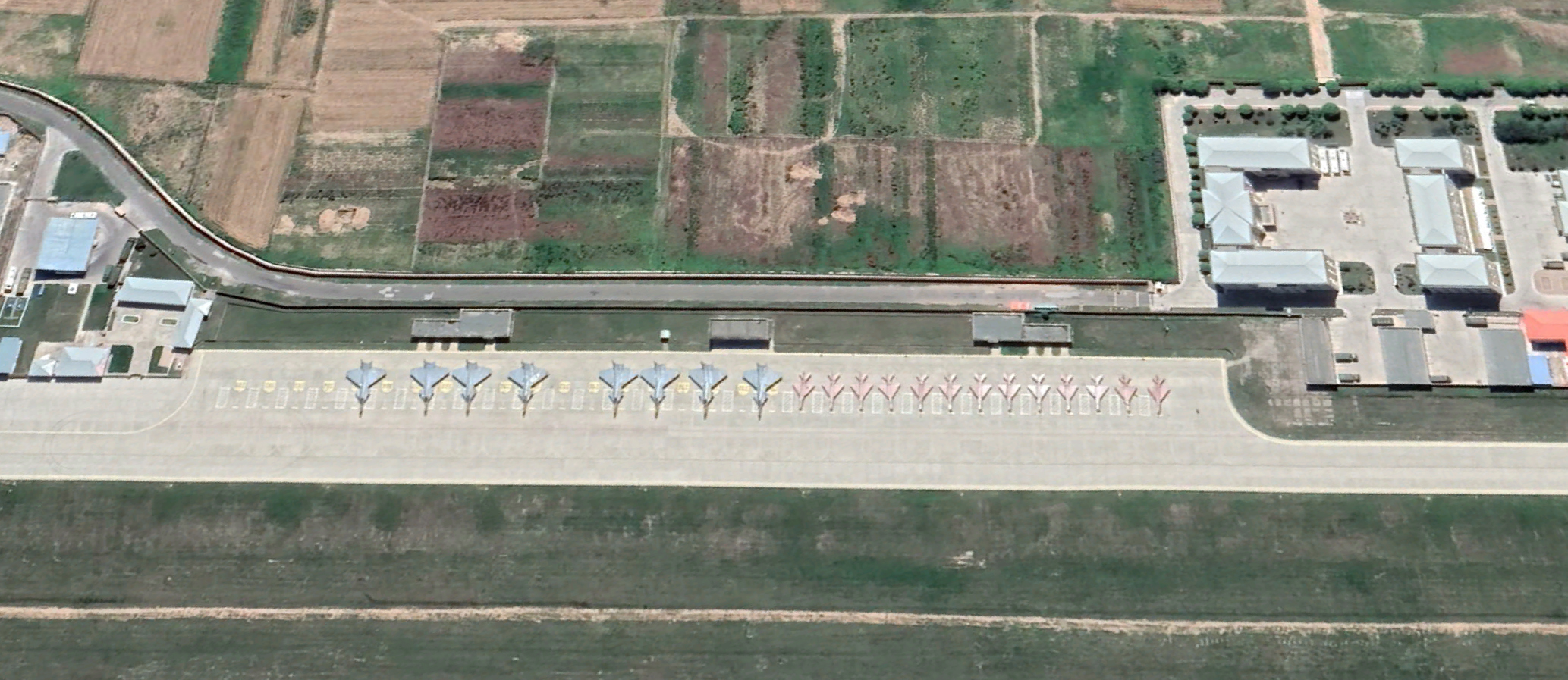
If these objects are indeed intended as J-20 decoys, there are various features that don’t match well with the real aircraft. They have near-perfect cropped-delta wings, rather than having the slightly cranked appearance of the J-20’s wings, which have a prominent leading edge root extension.
Most oddly, these ‘shapes’ also seem to have highly pointed noses. Although it’s not quite clear to what degree this is a feature of the lighting, the noses look much more slender, even needle-like. In fact, the entire fuselage seems to be considerably narrower, based on a comparison of an overhead view of the fairly bulky, twin-engine J-20. Both have twin tails, although those on the J-20 are larger and apparently more widely spaced.

In fact, in some ways, the Lanzhou ‘shapes’ seem to share a lot in common with some early concepts for the U.S. Navy Advanced Tactical Fighter, or NATF, as seen below:
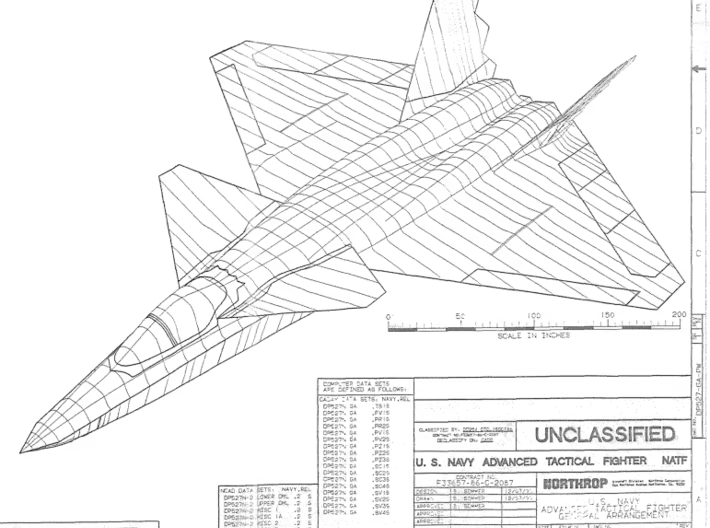
If these are supposed to mimic J-20s, then they would be very low-fidelity copies — perhaps even inflatable ones.
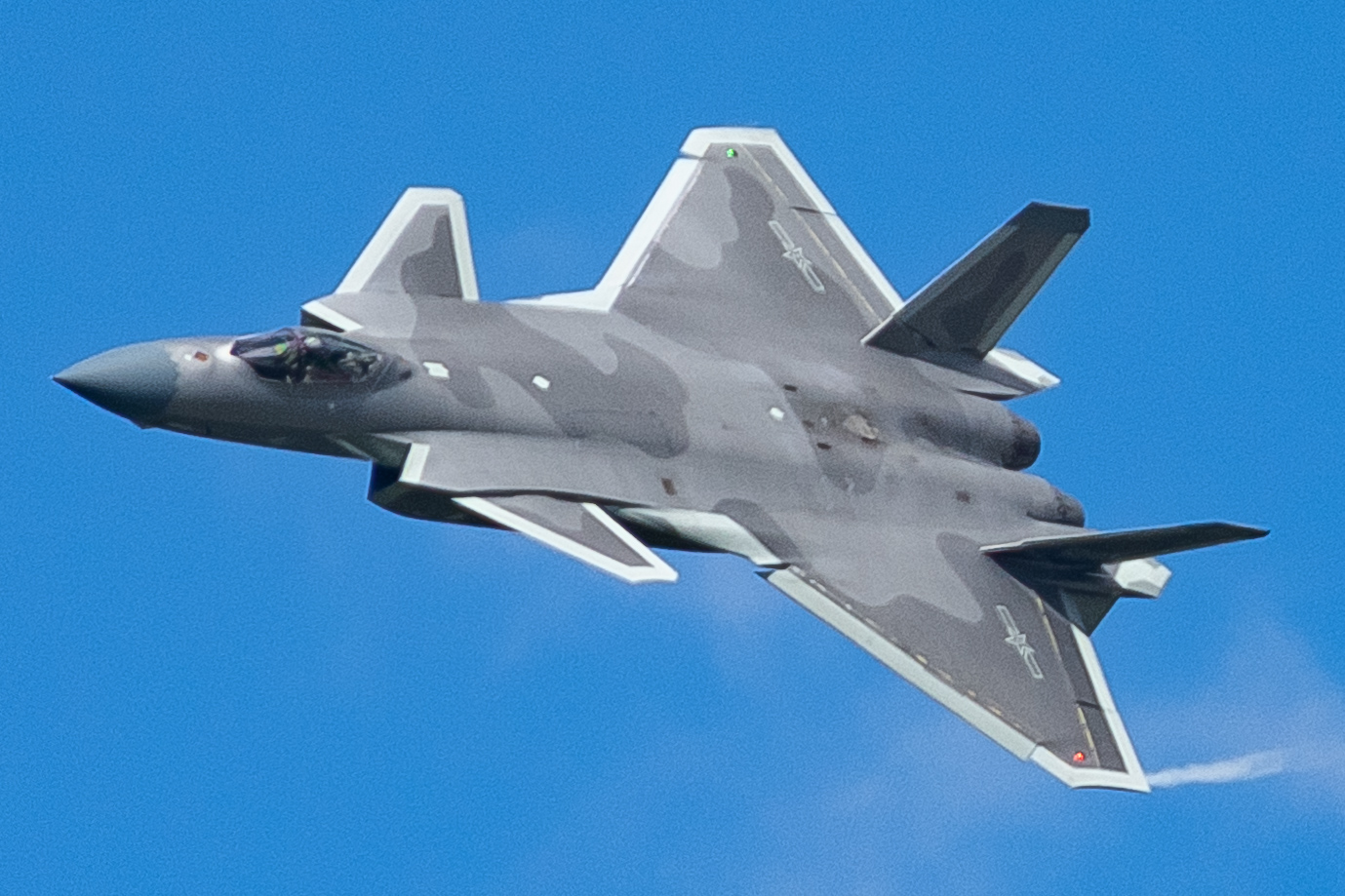
The big question, of course, concerns the purpose of these apparent decoys or full-scale models.
Firstly, the idea that these are related to any kind of exotic new fighter or UCAV design seems unlikely. After all, they are sitting on a flight line at an operational People’s Liberation Army Air Force (PLAAF) base in broad daylight. What is more, genuinely secretive Chinese military aircraft programs tend to remain highly concealed until the decision is made at the highest level to leak some information.
However, it is not impossible that what we have seen at Lanzhou does have some connection to a still-secret combat aircraft or drone program. After all, there have been previous examples of mysterious fighter-like shapes appearing at Chinese airbases. Last October, The War Zone examined an unusual delta-wing, tailless airframe that was spotted at the Chengdu Aircraft Corporation’s flight test airfield. You can read more about that here.
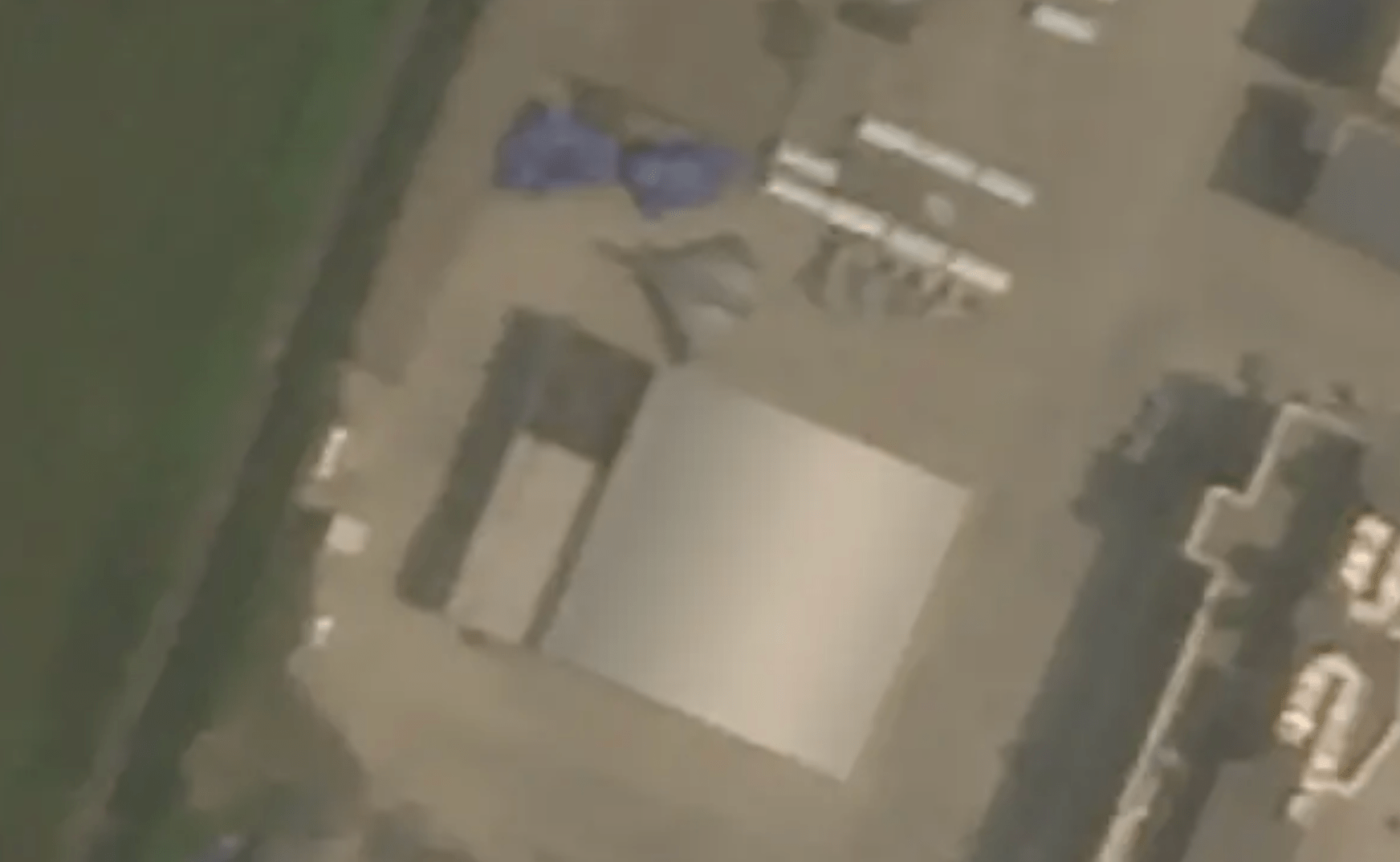
Some kind of test article related to the J-20 program seems unlikely, not just due to the lack of accuracy compared to the original. Full-size models are indeed a common feature of military aircraft development programs, being used for wind-tunnel tests, electromagnetic work, studying radar cross-section, and more. Indeed, at least one full-size J-20 mock-up has appeared in the United States where it was involved in visual and sensor training on behalf of the Marine Corps. However, that example was notably more faithful to the actual J-20.
Moreover, the J-20 program is now well advanced, with over 100 examples thought to be service and flight testing already underway on a two-seat variant as well. Furthermore, it’s hard to see why, if these shapes were related to ongoing J-20 test efforts, they would be located at Lintao, which is not a known test facility, and why there would need to be eight of them.
As noted earlier, the number of these ‘aircraft’ is also immediately notable. Eight seemingly identical J-20 lookalikes (or near-lookalikes) would certainly seem to suggest that they have some kind of decoy role.
Aircraft decoys are a familiar feature of certain airbases, either mocked up using fairly basic materials or created simply by moving retired airframes to discrete parts of the facility. Their role is to confuse foreign intelligence and would-be attackers, leading the former to gain false insights about aircraft locations, forces disposition, and order of battle, and the latter to target the decoys rather than the in-service assets.

The current war in Ukraine has demonstrated, on several occasions, that even obviously out-of-service aircraft can be mistaken for operational ones, protecting the latter while depleting the enemy’s munitions in the process.
Other aircraft decoys are inflatables, which have the advantage of being rapid to deploy and easier to move around. In Russia, in particular, inflatable decoys of aircraft and other military hardware are a fairly familiar part of deception tactics. The inflatable possibility could help answer why they only approximate the configuration of a J-20.
It would not be entirely surprising to see the Chinese also make use of decoys to protect their flying assets, especially the most valuable and capable — like the J-20 — as well as to confuse potential enemy intelligence-collectors.
On the other hand, it’s distinctly odd that these apparent decoys are not that convincing even when photographed from space from commercial satellites. It is hard to see what kind of sensors they might fool, with perhaps the only one being synthetic aperture radar, or SAR, which creates photo-like radar images of the ground.
That these shapes are to be used as some kind of decoy is also the initial conclusion of long-term Chinese aerospace observer Andreas Rupprecht. He told The War Zone that, at this stage, he thinks they are most likely “misshaped decoys,” but also that they could be related to some kind of movie or TV production. In that case, they may well be convincing enough for at least background props, perhaps with further post-production enhancements added. The J-20 has already appeared in at least one Chinese movie, Born To Fly, which was billed as an answer to Top Gun: Maverick. As the pride of the PLAAF, the J-20 would be an obvious choice to appear in other productions too.

For now, at least, the precise function of these objects remains unknown, although inflatable decoys seem like the most logic answer. Still, we can’t entirely rule out this isn’t something more tangible.
We will continue to watch this base with interest and report on any related developments.
Contact the author: thomas@thedrive.com
